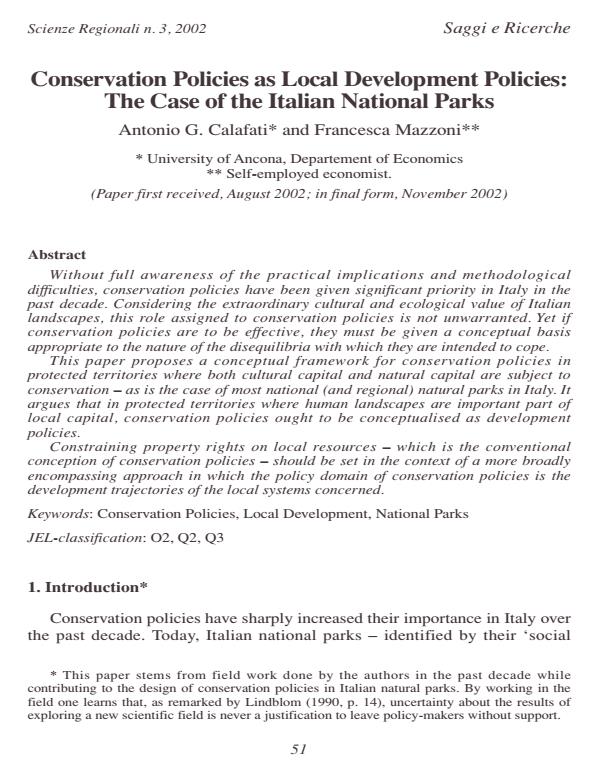Conservation Policies as Local Development Policies: The Case of Italian National Park
Journal title SCIENZE REGIONALI
Author/s Antonio G. Calafati, Francesca Mazzoni
Publishing Year 1 Issue 2002/3 Language English
Pages 22 P. File size 155 KB
DOI
DOI is like a bar code for intellectual property: to have more infomation
click here
Below, you can see the article first page
If you want to buy this article in PDF format, you can do it, following the instructions to buy download credits

FrancoAngeli is member of Publishers International Linking Association, Inc (PILA), a not-for-profit association which run the CrossRef service enabling links to and from online scholarly content.
Without full awareness of the practical implications and methodological difficulties, conservation policies have been given significant priority in Italy in the past decade. Considering the extraordinary cultural and ecological value of Italian landscapes, this role assigned to conservation policies is not unwarranted. Yet if conservation policies are to be effective, they must be given a conceptual basis appropriate to the nature of the disequilibria with which they are intended to cope. This paper proposes a conceptual framework for conservation policies in protected territories where both cultural capital and natural capital are subject to conservation - as is the case of most national (and regional) natural parks in Italy. It argues that in protected territories where human landscapes are important part of local capital, conservation policies ought to be conceptualised as development policies. Constraining property rights on local resources - which is the conventional conception of conservation policies - should be set in the context of a more broadly encompassing approach in which the policy domain of conservation policies is the development trajectories of the local systems concerned.
Antonio G. Calafati, Francesca Mazzoni, Conservation Policies as Local Development Policies: The Case of Italian National Park in "SCIENZE REGIONALI " 3/2002, pp , DOI: